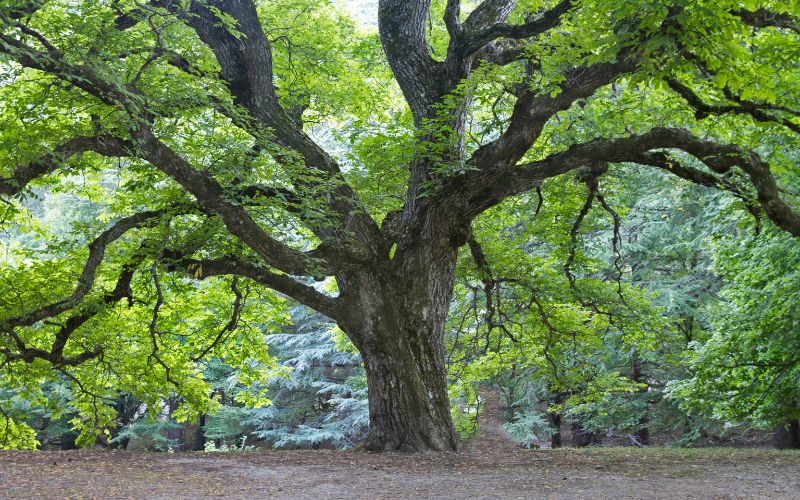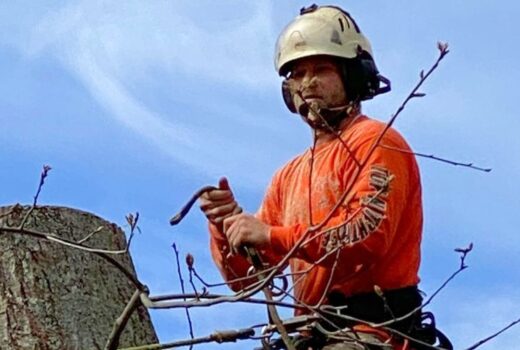As your trees begin to grow new leaves this spring, you may notice that your beech trees look a little sparse. Those with new growth may look sick, thin, or have noticeable bands on the tree leaves.
These symptoms are due to a recently discovered tree disease known as Beech Leaf Disease, or BLD.
In this article, we will review the details of beech leaf disease, show you what symptoms to look for, describe how the disease spreads, and discuss methods for preventing and treating it.
Why Have I Not Heard of Beech Leaf Disease Before?
Beech leaf disease is new to Massachusetts. In fact, it was only discovered in the U.S. in Ohio in 2012. It has spread to the Northeast in the past few years, first spotted in Plymouth, Massachusetts, in 2020, and is now a much bigger issue in Massachusetts, especially the South Shore.

Leaves with BLD, photo courtesy of Matthew Borden, Bartlett Tree Experts, Bugwood.org
What Causes Beech Leaf Disease?
Beech leaf disease is caused by a foliar nematode, a tiny insect known as Litylenchus crenatae. The nematode is suspected to be native to Japan, but that has not been concluded at this time. As stated earlier, this disease hasn’t been around for very long, so not many details are known about how it is spread.
What Are the Signs of Beech Leaf Disease?
Beech leaf disease is most easily spotted by standing under the canopy of a beech tree and looking up. Leaves infected with BLD will have dark bands.
Leaves can also appear cupped, curled, thicker than usual, or otherwise distorted.
In early spring, if nematodes are overwintered on a beech tree, they will kill any new buds, preventing the tree from producing new leaves or shoots.
Which Trees are Affected by Beech Leaf Disease?
All beech trees, including American, European, Japanese, and Oriental varieties, can be infected by beech leaf disease. Trees in both urban and forested areas have been affected.
Are There Many Beech Trees in Massachusetts?
Yes, there are approximately 141 million beech trees in Massachusetts. In fact, many of our forests are primarily composed of American beech trees (Fagus grandifolia).
Sadly, while many beech trees in the Midwest seemed to survive beech leaf disease, trees in Massachusetts and other New England states are dying much more rapidly after infection.
Why is Beech Leaf Disease Problematic?
Beech leaf disease not only causes cosmetic issues to beech trees but also attacks the tree itself. If it is not prevented or treated, beech leaf disease can become fatal to infected trees.
What Can You Do to Protect Your Beech Trees?
For now, we recommend that you wait to plant any new beech trees, as they can often spread beech leaf disease to nearby trees with the help of birds and insects.
Take care of your trees’ health. One reason that beech leaf disease may be more destructive to trees in our area is that the trees have already encountered other stressors, such as tree pests, drought, winter damage, or a lack of nutrients.
Remove any infected beech trees. Contact Top Notch Tree to remove any infected trees as soon as possible.
For more information on beech leaf disease in Massachusetts, check out these resources:







